|
Arctic Tern Sterna paradisaea
|
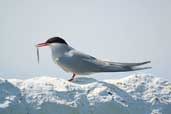 |
The Arctic Tern performs the longest migration known for a bird. It breeds around the Arctic in Europe, Asia,
Alaska, Canada and Greenland and has the most northerly breeding range of any tern. It also breeds round Scotland, Ireland, northern England and on
coastal Holland, Germany and into the Baltic. |
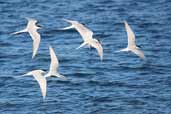 |
These birds migrate south to the Antarctic with birds from the south of the range leaving from late July and
returning from early May while more northerly breeders leave up to early October and return up to end June. See the distribution map at xeno-canto.
They breed mainly on coasts and inshore islands while, outside the breeding season they spend most of their time at
sea.
|
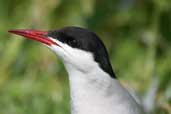 |
They feed on fish, insects and shellfish. Fish are caught by plunge-diving normally after a hover.
They are similar to Common Tern Sterna hirundo but have a shorter bill,
shorter legs and a longer tail so that, in flight, the wings look set further forward than on Common Tern. The bill is dark red with no black
tip.
|
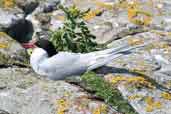 |
The nest is a shallow hollow on the ground and it is
defended vigorously as any visitor to the Farne Islands will know (see penultimate photo). There are between 1 and 3 eggs in a clutch.
The final photo shows a juvenile bird with its black bill.
|
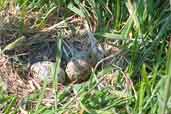 |
|
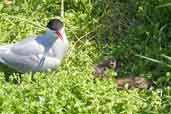 |
|
 |
|
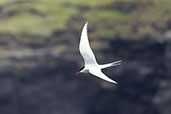 |
|
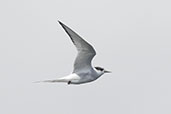 |
|
|
|








